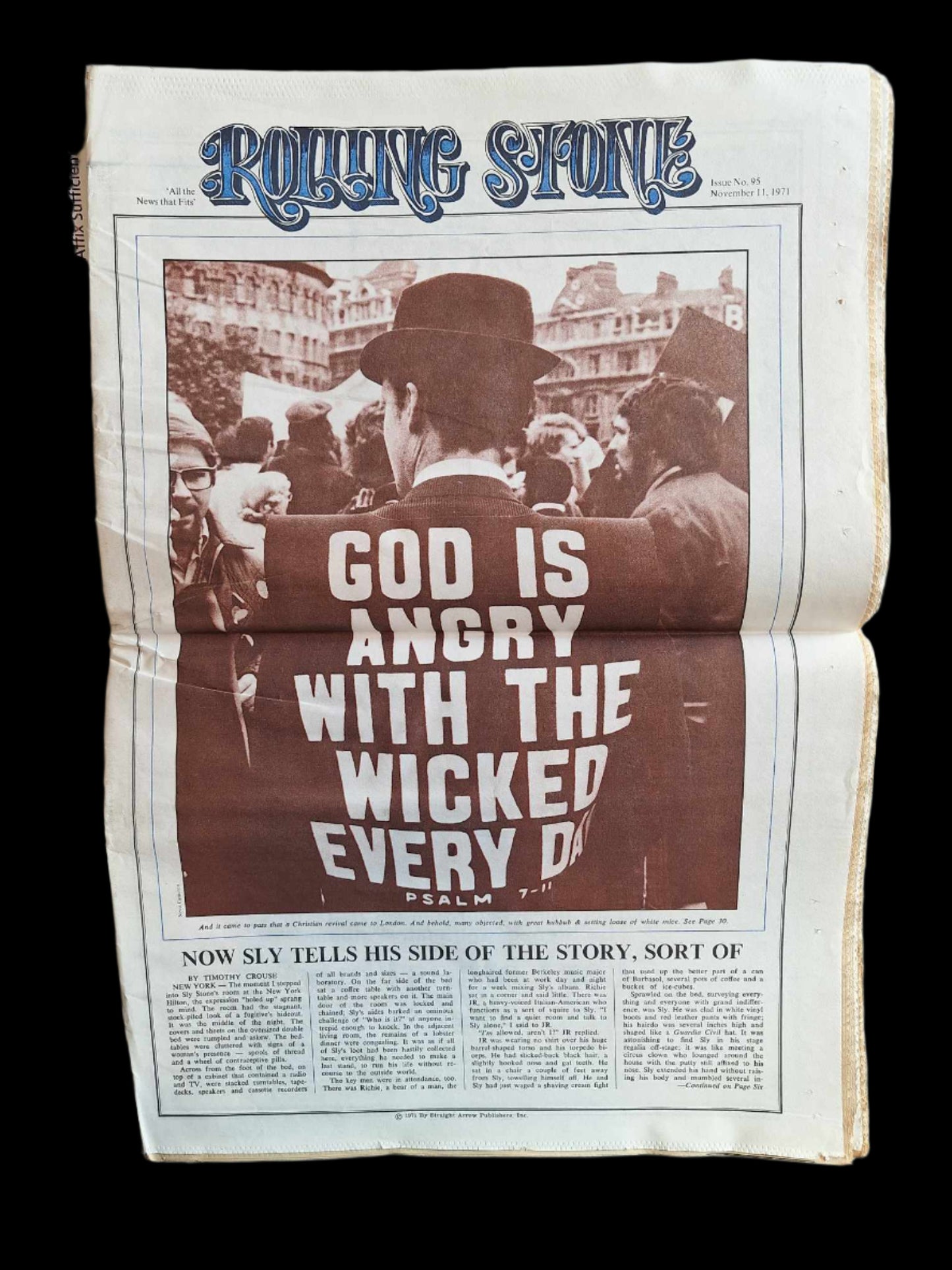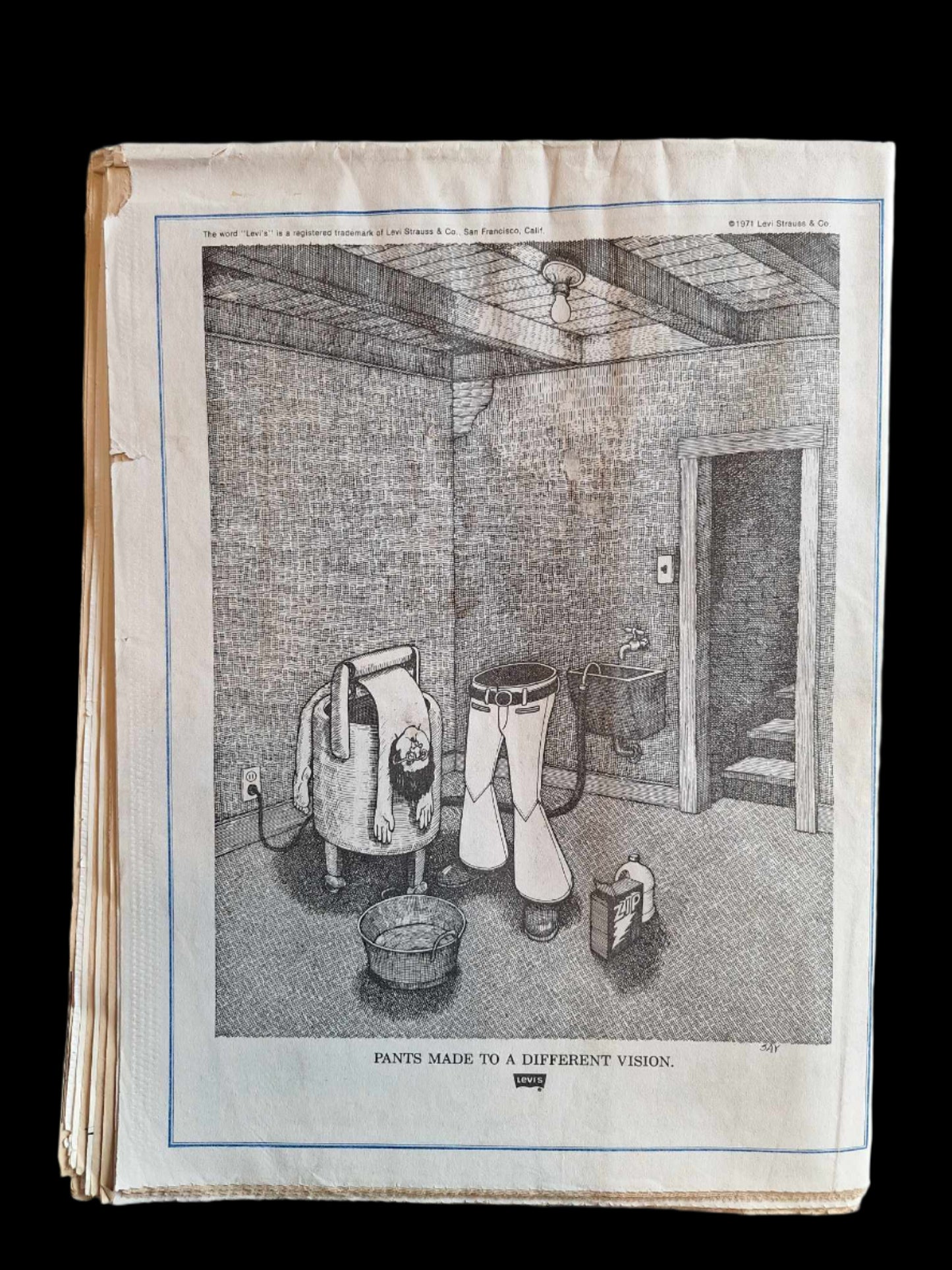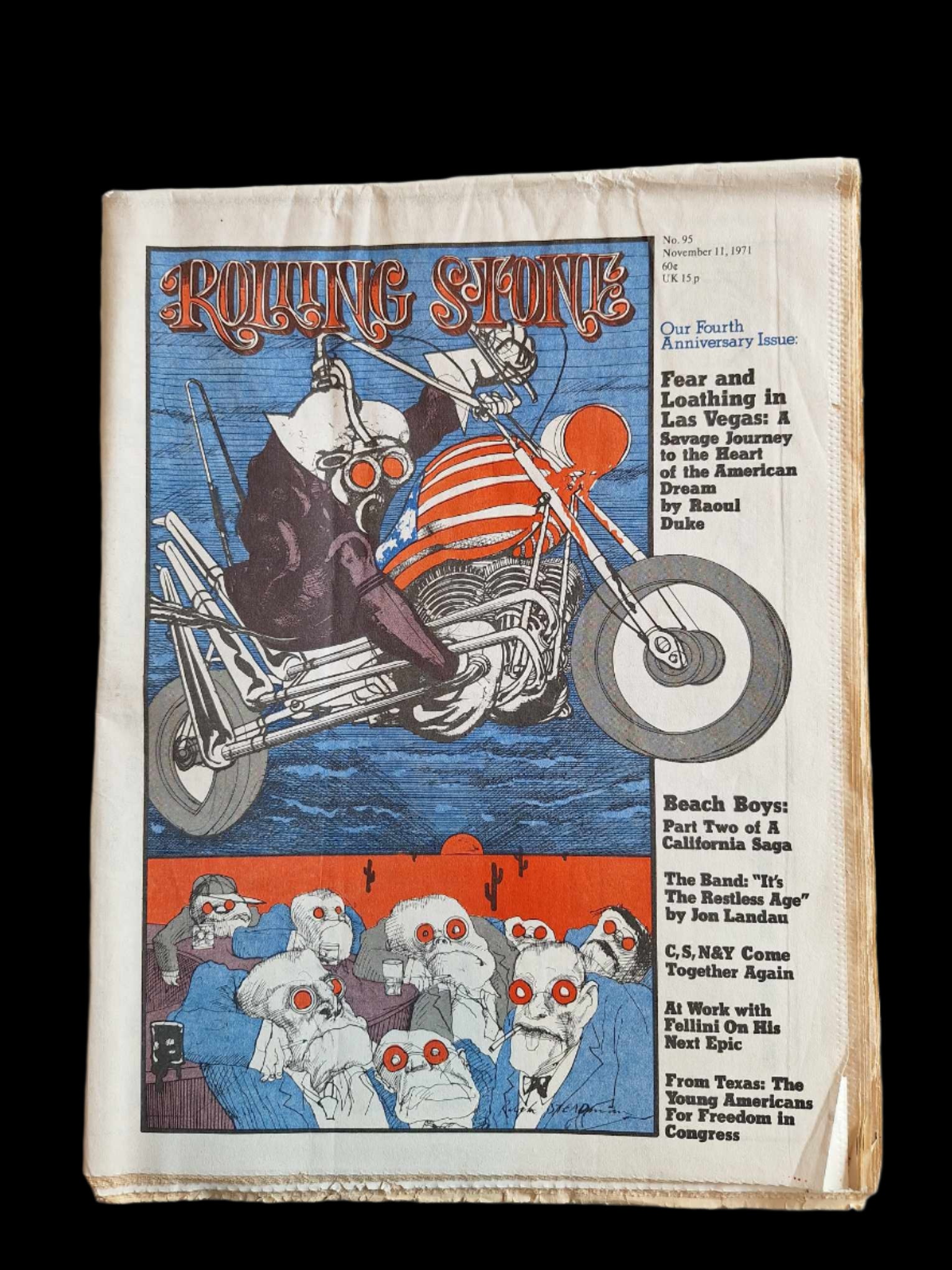Mile High Vinyl
Rolling Stone Magazine Issue #95 (1971) – Fear and Loathing in Las Vegas by Hunter S. Thompson
Rolling Stone Magazine Issue #95 (1971) – Fear and Loathing in Las Vegas by Hunter S. Thompson
Couldn't load pickup availability
Vintage Rolling Stone Magazine – Issue No. 95 (November 11, 1971)
Fourth Anniversary Issue – Featuring “Fear and Loathing in Las Vegas” by Raoul Duke (Hunter S. Thompson)
Step into counterculture history with this electrifying 1971 Rolling Stone time capsule—the iconic Issue No. 95, celebrating the magazine's Fourth Anniversary with the explosive debut of Fear and Loathing in Las Vegas by Raoul Duke, aka the legendary Hunter S. Thompson.
This issue captures the raw, psychedelic energy of early-70s America with a stunning Ralph Steadman-style illustration on the cover: a surreal, gonzo-style depiction of a desert biker bathed in American iconography, streaking across a dreamscape of fear and madness.
Inside, this piece of rock 'n' roll journalism features:
-
Beach Boys: Part Two of a California Saga
-
The Band: “It’s the Restless Age” by Jon Landau
-
Crosby, Stills, Nash & Young come together again
-
An intimate dive into Fellini’s next epic
-
Voices from the youth revolution in Texas politics
Also included: a wildly creative full-page Levi's ad, illustrated in intricate pen and ink detail, bearing the slogan: “Pants Made to a Different Vision.” The surreal art depicts anthropomorphized laundry machines and jeans with arms and legs, underscoring the spirit of artistic rebellion that defined the decade.
Flip to the back, and you're greeted by a jarring, thought-provoking black-and-white photograph of a protester’s back, emblazoned with the words “God is Angry With the Wicked Every Day – Psalm 7:11”—a sharp juxtaposition of religion and rebellion that opens into an editorial on Sly Stone, where the funk legend finally “tells his side of the story... sort of.”
Condition:
Overall, this magazine is in impressive vintage condition for its age. The cover remains vibrant with minimal fading, and the spine and binding are intact, with only minor edge wear visible on the bottom corners and some creasing on the cover and pages—a testament to its 50+ year journey through cultural history. There’s no major tearing or staining that affects legibility or aesthetic appeal. It remains a prized collectible for fans of gonzo journalism, music history, and counterculture ephemera.
Share





















